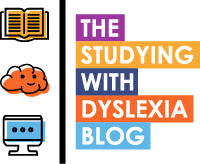Having worked in the field of dyslexia and neurodiversity for many years, evaluating products and services has always been an intriguing part of my career. I recently had the pleasure of meeting the team from TTS Resource at both the Dyslexia Show and the Leeds Dyslexia Festival. One product that particularly caught my eye was Stapelstein.
Stapelstein is described by the company as a tool designed to encourage children to engage in active play through movement. This description truly resonates with my experience. Over the past few weeks, I’ve had a lot of fun experimenting with it and discovering its many versatile uses.
Initially, I used the Stapelstein as a stool, adjusting its height by adding or removing pieces with the board on the bottom, which creates a very stable, strong, and durable seat that has no issue with the weight of the user. By placing the board on top, this setup creates what can only be described as a wobble chair that promotes extreme fun, instils durability, and improves core strength when seated. It’s beneficial for both young people and teachers who need adaptable seating options for classrooms with smaller desks and chairs.
But Stapelstein’s versatility extends far beyond seating. It can be filled with water, used to carry sand, built into stepping stones, or even turned into a wobble board strong enough to support my weight. I keep coming back to how durable this product is and how beneficial it can be for so many uses with students with additional needs. I found it equally useful in my living room and office. In fact, when I went to pack it away the other day, I discovered that part of it was missing. My daughter had taken a piece and the board to use as a stool on her bed while watching her tablet in her bedroom. You could see very much that she was using this as a way to release excitement in what she was doing. This gave me a deeper understanding of other benefits, such as aiding with fidgeting or providing a safe and secure way to release energy.
I’m genuinely impressed with Stapelstein’s design, vibrant colours, and durability. As someone with dyspraxia who has spent a lot of time swinging on chairs, I found Stapelstein therapeutic. Despite the risk of falling off, I could swing quite a bit with my feet firmly on the ground, providing more evidence that this would be very useful for students needing an area of release or a fidget tool to keep them engaged.
Stapelstein offers numerous tactile and balance-related uses, such as spinning, stacking, sorting, carrying, and even listening. After doing a bit of research, I found that the company had already identified these areas that I had thought of, along with additional uses including hiding, throwing and catching, transporting, and creating.
This extremely versatile product can be effectively used in alternative settings or in the class room for children with additional needs and by adults who need to engage with children at their level. It’s suitable for both indoor and outdoor use and can support various areas of learning, understanding, and personal development.
An amazing product, Stapelstein is something I would personally recommend for children and adults alike. It offers endless possibilities for exploration and growth.
TTS Educational Resources Search Results (tts-group.co.uk)
About the Author
Arran is a severely dyslexic adult with over 20 years of experience working in the dyslexia and neurodiversity field. He has previously worked with the British Dyslexia Association and collaborates closely with educational institutions as a consultant and governor. Arran is the founder of the Neurodiversity Show and SEND Group. This article was updated with the assistance of artificial intelligence to reflect Arran’s experiences and insights.

